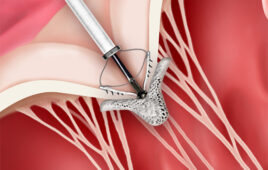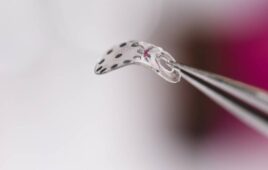 A European consortium led by the Tyndall National Institute at University College Cork has secured EU funding for a €6.1 million project to engage in research into new materials and devices that will facilitate extraction and storage of energy from a beating heart to power a pacemaker.
A European consortium led by the Tyndall National Institute at University College Cork has secured EU funding for a €6.1 million project to engage in research into new materials and devices that will facilitate extraction and storage of energy from a beating heart to power a pacemaker.
The project, known as ‘MANpower’, will target the development of perpetually self-powered, electronic systems that can be implanted into the human body, thus removing the requirement for a battery replacement.
The collaborative project is coordinated by the Tyndall National Institute, and brings together a number of European partners including Fraunhofer – EMFT, Cork Institute of Technology (CIT), Technische Universiteit Eindhoven, the Katholieke Universiteit Leuven, IEF at Universite Paris-Sud, 3D Plus, Sorin and Communicraft Limited.
Explaining the research, Dr Alan Mathewson, Principal Investigator at Tyndall and Head of the Heterogeneous Systems Integration group, said:
“Every time a human heart beats, it creates vibrations at a low frequency – about 1-30 Hz. The devices we are developing convert the vibrations from the heart into usable electrical energy, which can be used to power devices such as a pacemaker.
With MANpower, we are designing a miniaturised system that will eliminate the need for large-scale batteries to power implanted electronics by converting human heartbeat vibrations into electrical energy”.
Energy harvesting at low frequency has proven to be difficult to achieve in the past because of the properties of the materials that the devices are fabricated from. In particular the stiffness of conventional silicon and all piezoelectric materials makes it exceedingly difficult to make a system that can operate below 100Hz. There are many sources of low frequency vibrations e.g. human motion, the motion of ships, and traffic; so an Energy Harvester that can operate in this frequency range would have a large commercial potential and extensive opportunities for future exploitation.
The multi-disciplinary MANpower project proposal addresses the lack of durable energy harvesting systems in this frequency range and aims to exploit the partnership’s strengths. These include the energy harvesting and charge storage expertise at Tyndall and IEF; the knowledge of the physics reliability at CIT; and the design and communications skills of Communicraft to develop devices to provide low frequency tunable energy harvesting device and high energy density compact supercapacitors for energy storage.
Furthermore, biocompatible packaging technologies will integrate the full system, while the study of component reliability and models that can project their lifetime will also be developed. Technische Universiteit Eindhoven will lead on the synthesis of polymer networks with tunable mechanical and piezoelectric properties while Katholieke Universiteit Leuven will be responsible for performing in vivo testing of the prototype pacemaker.
Project coordinator, Dr Cian O’Murchu, said: ‘This project will provide an employment boost to the Irish high tech sector by creating five new positions and securing others over a three year period. It is also anticipated that the research results developed over the course of the project will have the potential to expand into new applications areas in the field of medical and diagnostic devices’.
Part of the MANpower project builds upon research conducted at Tyndall’s Collaborative Centre for Applied Nanotechnology (CCAN), in conjunction with Analog Devices Inc. Limerick, which was funded by Enterprise Ireland.
For more information, visit www.tyndall.ie.




